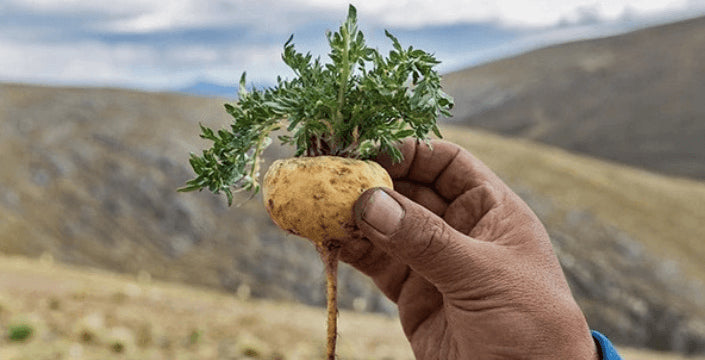Your Cart is Empty
Shipping is free on orders over €60!
Shipping is free on orders over €60!

You probably know maca as Peruvian ginseng, Peruvian Via*ra or the Queen of the Andes, but it's actually a root. Maca looks similar to a beet, but is actually one of the oldest plants in the world. Their production was concentrated at high altitudes in the South American Andes. The local people commonly use Maca to prepare various dishes, but also as a medicine. We find Maca in different variants, with each Maca variety having slightly different benefits. The most well-known is the yellow Maca, then there is a less common red and black Maca.

In this remarkable plant we mainly find many essential amino acids that the body cannot produce itself. Maca contains vitamins B1, B2, B6 and also vitamins C and E. Maca also has basic substances and minerals such as calcium, iron, zinc, potassium and magnesium to a lesser extent.

The most common way of consuming maca root is in the form of dried powder. You can add the powder to a smoothie or any liquid. Maca powder is also suitable for adding to jams, puddings or porridge.
Further, you can simply consume it as a dietary supplement in tablet form. You can easily combine it with other dietary supplements. The appropriate daily dose is one teaspoon, about 5-7 g.
Ingredients:
1 frozen banana
100g frozen mango
1 teaspoon vanilla extract
200-300 ml milk or plant milk
20 g protein powder of your choice
5-7 g Maca powder
Freeze the fruit overnight or at least 3 hours beforehand. Then put it in a blender with the milk, vanilla extract and maca. Mix it thoroughly. Only then add the protein powder. Blend for just a few seconds to combine the ingredients. Serve over ice and consume immediately.
No known risks to humans, not even animals. Maca can help you along the path to better health and fitness.